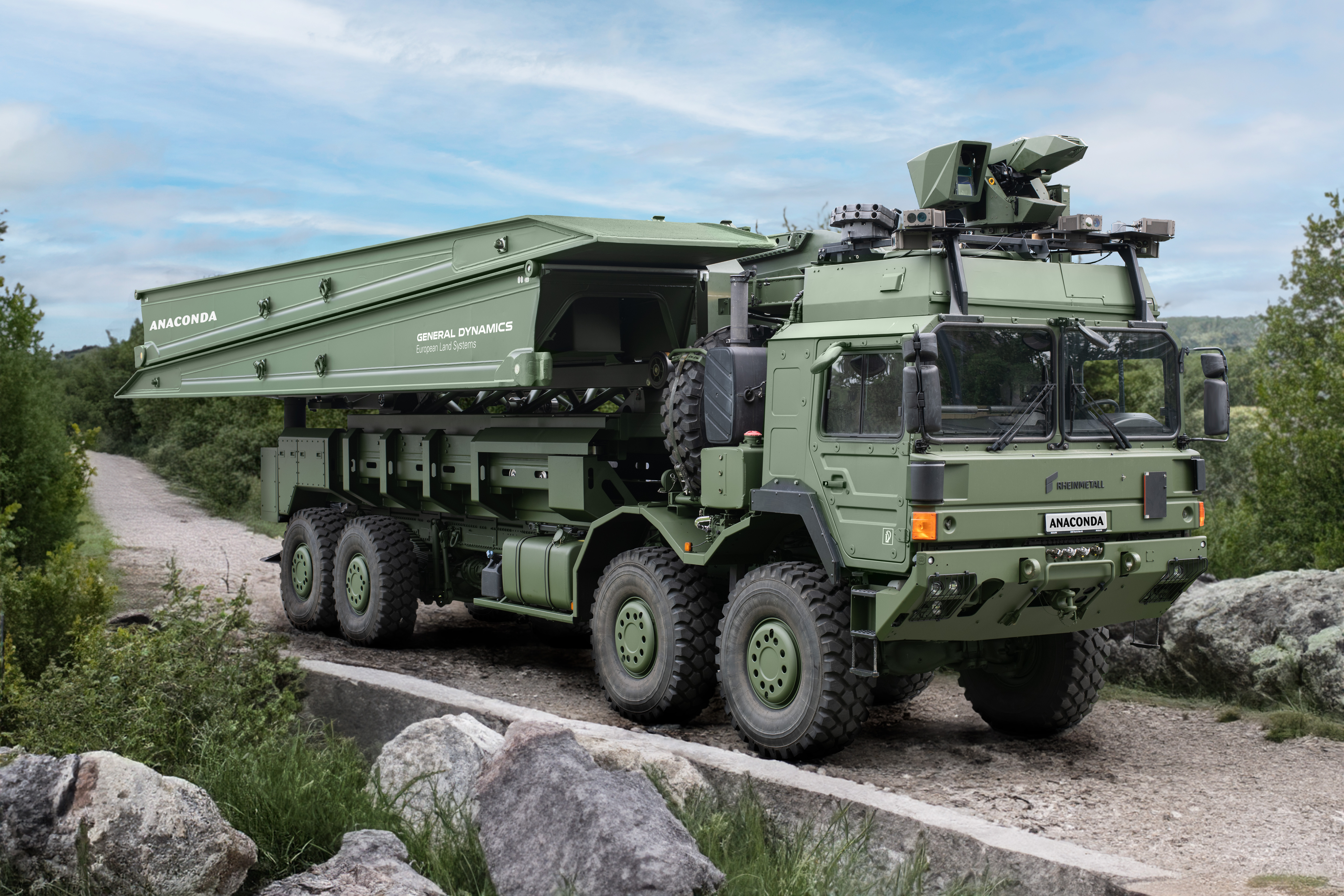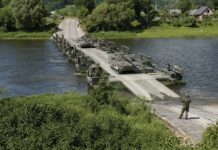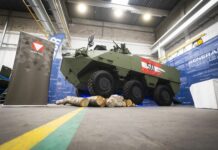Over more than a century of operational deployments, military vehicles of all descriptions have evolved in shape, size and weight, with military bridging and gap-crossing systems keeping up with those changes in order to safely bear in-service vehicular platforms across obstacles to maintain force mobility on the battlefield.

The procedure and information required for vehicles and bridging systems to calculate their respective MLCs are complex, and space precludes detailed consideration of the process to calculate MLCs here. In the context of this article on military bridging, the MLC number is representative of the load-carrying capacity of the bridging or gap-crossing equipment and the effect produced by a particular military vehicle crossing them, factoring into any calculations such parameters as vehicle weight and geometry, as well as differing characteristics for tracked and wheeled platforms. This assessment ensures the vehicle’s capability to use a particular piece of gap-crossing equipment, without it catastrophically failing, with the potential loss of vehicle, or vehicles crossing it, or simply causing damage to the bridging system in any way. An accurate MLC allows users, or assigned combat engineers, to determine, which appropriate and available gap-crossing systems can be used to support a particular mission safely.
The MLC calculation procedure is conducted according to NATO Standard AEP-3.12.1.5. It is worth stressing the point that when calculating a vehicle’s MLC, whether tracked or wheeled, its final MLC is dependent not only on the vehicle’s weight, but also on its geometry.
Keeping inventory MLCs on track
With that brief MLC explainer in mind, and in order to find out a little about how the military bridging sector is keeping its inventories on top of latest armour trends and how MLC requirements might be changing in the face of current tracked and wheeled-vehicle developments, ESD spoke with leading military bridging manufacturers, General Dynamics European Land Systems–Bridge Systems (simply GDELS for the purpose of this feature) and KNDS UK.
While armoured vehicle designs continue to change and are, in some, though not all, cases getting heavier, military bridging makers are having to ensure their bridging portfolios can meet any new MLC requirements. A spokesperson for GDELS told ESD that this is not really a new trend, as gap-crossing assets have always needed to keep pace with the growing weights and design changes of the vehicles they were supposed to carry, adding that load capacity is influenced by a variety of construction factors. To ensure bridge qualification even for the heaviest loads, the calculated specifications are verified through extensive tests by manufacturers, customers, and neutral test authorities.

Floating heavy armour
Having come through all those qualification stages, GDELS said that its main floating and dry-gap bridges, such as the M3 and the Anaconda, are designed and qualified to carry the heaviest MBTs in use with NATO. This has been practically proven in several customer tests, including recently by the US Army’s Engineer Research and Development Centre (ERDC), which tested the Army’s in-service Improved Ribbon Bridge (IRB) with the latest configuration of the M1A2 Abrams main battle tank (MBT), the M1A2 SEPv3. At 9.7 m long, 3.7 m wide, and 2.4 m high, the new variant weighs in at 66.8 tonnes (though can be heavier with additional components added), an increase compared to the earlier M1A2 SEPv2, which weighs 64.6 tonnes. The GDELS IRB passed all the Army’s tests and is now approved to carry the new M1A2 SEPv3 in both the IRB’s bridge and ferry configurations.
Another GDELS example is its M3 amphibious bridge and ferry system, which won a competitive trial in South Korea during 2021 against international competition, and more recently began deliveries to the Swedish Defence Materiel Administration (FMV) in November 2024. The M3 is engineered to bear the weight of some of the heaviest European MBTs, such as Challenger 2, which when including its different combat armour configurations can go up to around 75 tonnes; the Leopard 2A7V at some 66.5 tonnes is also approved for carriage by the M3 system. GDELS told ESD that its M3 amphibious bridging system is being further developed at this time, February 2024, “to carry even higher loads in its next generation”.
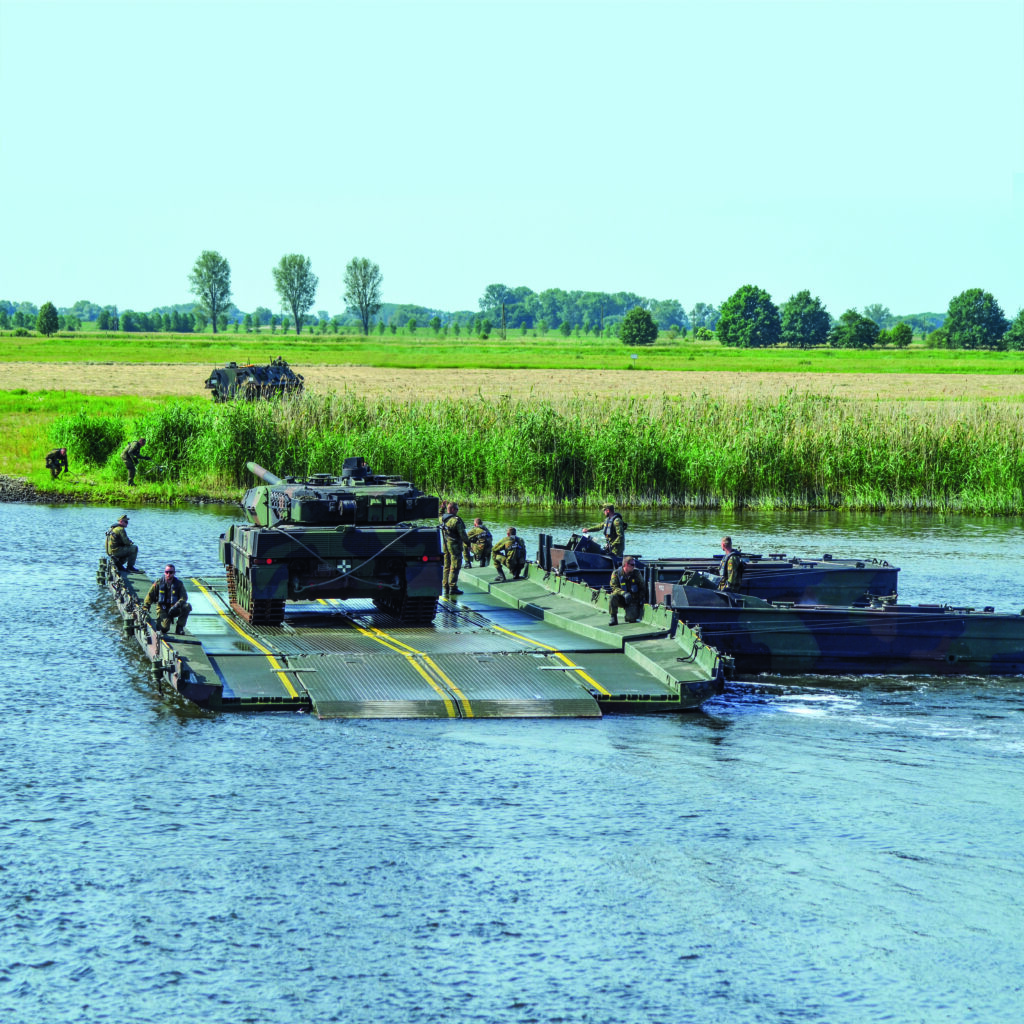
On this same subject of re-engineering and modification of existing systems to change MLCs, KNDS’ Livingstone told ESD that, “There is potential to modify our current bridge systems, with key considerations such as weight, build time, build complexity and ease of transportation taken into account. Retrofitting equipment to existing bridges presents significant growth potential in our current tactical bridge portfolio and upgrades to current systems would allow continued interoperability with the existing fleet.”
Adapting to the latest armour
While European military armoured vehicle designs are changing, weights are not necessarily always increasing – as can be seen with the US Army’s recent decision to backtrack on completing development of the M1A2 Abrams SEPv4 variant. Indeed, GDELS’ spokesperson said that they believed today’s MBTs had reached practical weight limits and that future combat vehicles are likely to become lighter once more, due to new technologies, including active protection systems (APSs) and unmanned subsystems. This will help avoid the severe limitations to mobility imposed by increasing vehicle weight.
The new trend towards speed and mobility on the battlefield is a clear one and not only contributes to a vehicle’s survivability, but also, as GDELS emphasised, illustrates the importance of getting a vehicle to where it’s needed in the first place. Without the right bridging, that vehicle is almost worthless; and that’s without factoring in the many restrictions to size and weight that will be encountered along the way in Europe’s civilian infrastructure, which is often ill-prepared for MBTs.
For its part, according to Livingstone, KNDS UK’s R&D team continuously appraises developments in the armoured fighting vehicle (AFV) market to ensure that the company’s portfolio remains at the forefront of the tactical bridging sector. She said that looking at the MLCs for current MBTs, it appears that tactical bridging will be able to traffic these systems without the need for upgrades, adding that each of the company’s four main bridging categories – assault bridging, tactical bridging, LOC bridges and wet gap crossings – has a technology leader with whom most NATO partners operate, which provides interoperability between the users. “In the case of our dry support bridge (DSB) in the tactical bridging sector, current interoperability can be sustained whilst catering for the latest AFVs coming into service.”
Versatile inventory
As for GDELS’ bridging product range, its systems, some already mentioned, can handle payloads and MLCs ranging from 100 kg to 120 tonnes. The Anaconda wheeled tactical bridge-laying system, for example, incorporates the earlier Beaver bridge’s proven design, re-engineered and carried onboard either 8×8 or 10×10 trucks, with the two available Anaconda variants – 1×22 m span and 2×12 m spans – tailored to NATO’s payload/MLC requirements and, according to the company, able to carry all vehicles currently in use by Alliance forces. GDELS presented the Anaconda on an 8×8 HX truck from RMMV at Eurosatory 2024, although other platforms are capable of carrying the bridge; the use of 10×10s allows for crew cab protection to be integrated into the design.
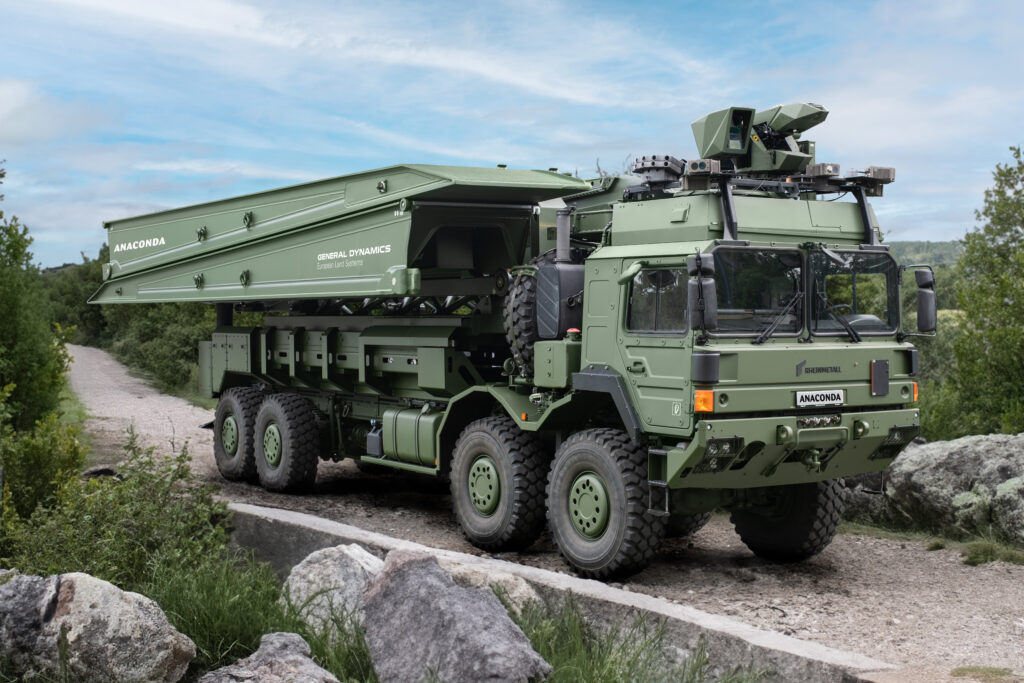
When it comes to the hundreds of major rivers snaking their way throughout Europe, for wet-gap crossing GDELS’ M3 and IRB floating bridge systems are an essential part of NATO’s military mobility backbone. The M3 is the most agile available amphibious bridge and ferry system for such applications in the Alliance, although many more M3s are ideally needed across member nation inventories for the Alliance to be truly prepared in the event of a major Europe-wide conflict. M1A2 Abrams, Challenger 2, and Leopard 2 main battle tanks (MBTs) are just some of the armour the MLC 85(T)/132(W) M3 is capable of carrying in its bridge or ferry configurations.
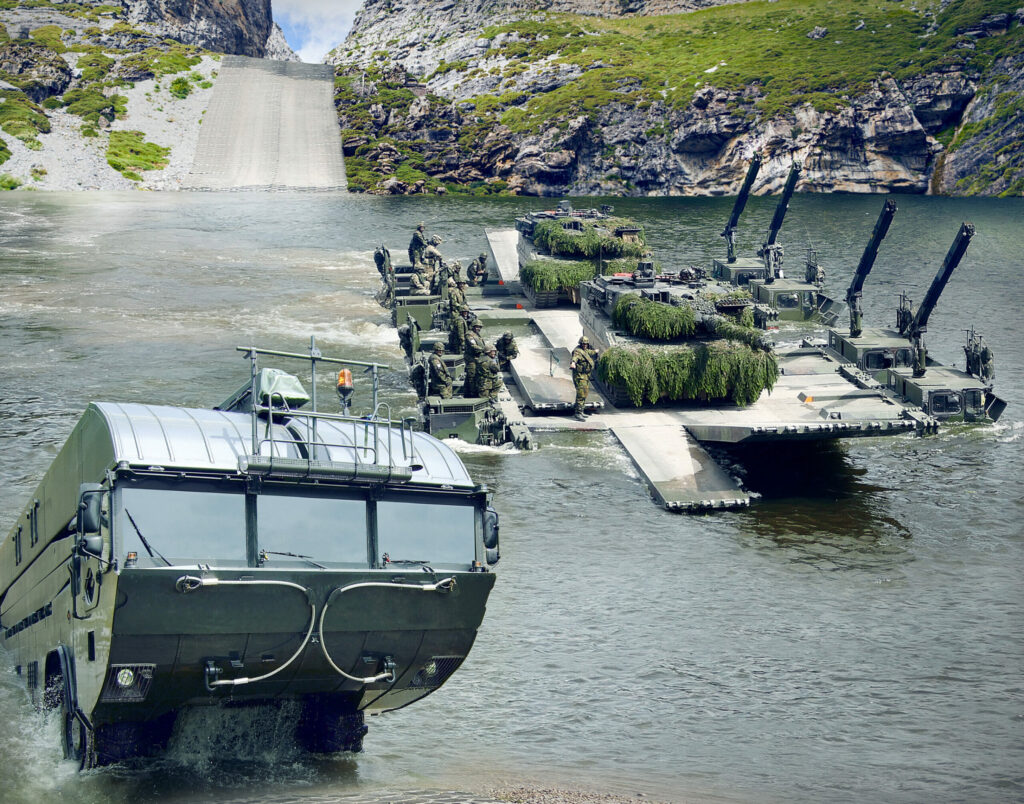
Adapt or die
Among the inventories of NATO members and in the portfolios of Europe’s military bridging industry sector, there are undoubtedly advanced bridging systems displaying the right MLC characteristics to handle even the highest vehicle load classifications across European military fleets. Their ability to adapt to new vehicle requirements is clear. The problem is, there simply are not enough of them already in the hands of Allied forces. So, it’s not just a growing variety of new-generation tracked and wheeled armour that’s driving NATO’s need for more bridging systems with the appropriate MLCs, it’s also because many more bridging systems, of all kinds, are needed across the Alliance, period. These assets need to be pre-deployed at scale among member nations, particularly on the Alliance’s eastern flank, in order for combat engineers to have all the systems they need at a moment’s notice.
Without these resources, the engineers just can’t make that happen, and that makes military bridging systems about as essential as the armour they’re designed to carry. While doctrine is developed by armed forces and not by industry, it should be unsurprising that GDELS advocates for high availability of bridging assets, with the spokesperson noting, “Wherever manoeuvre elements go, combat engineers need to be able to support them without delay, using more systems in quantity, but also with a flexible and diversified toolbox. It is, however, up to the users to define their needs and implement respective procurement programmes.”
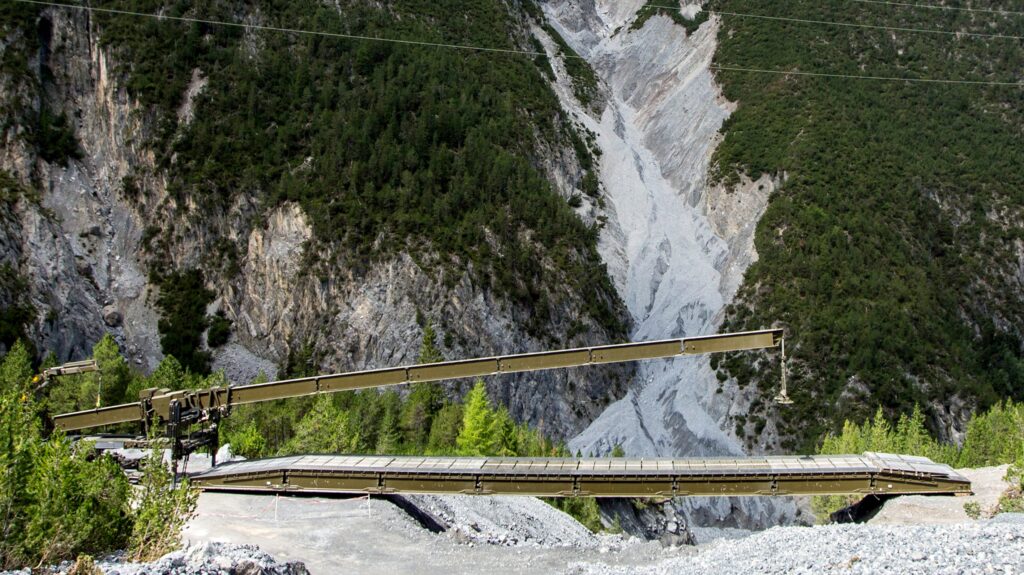
Tim Guest


